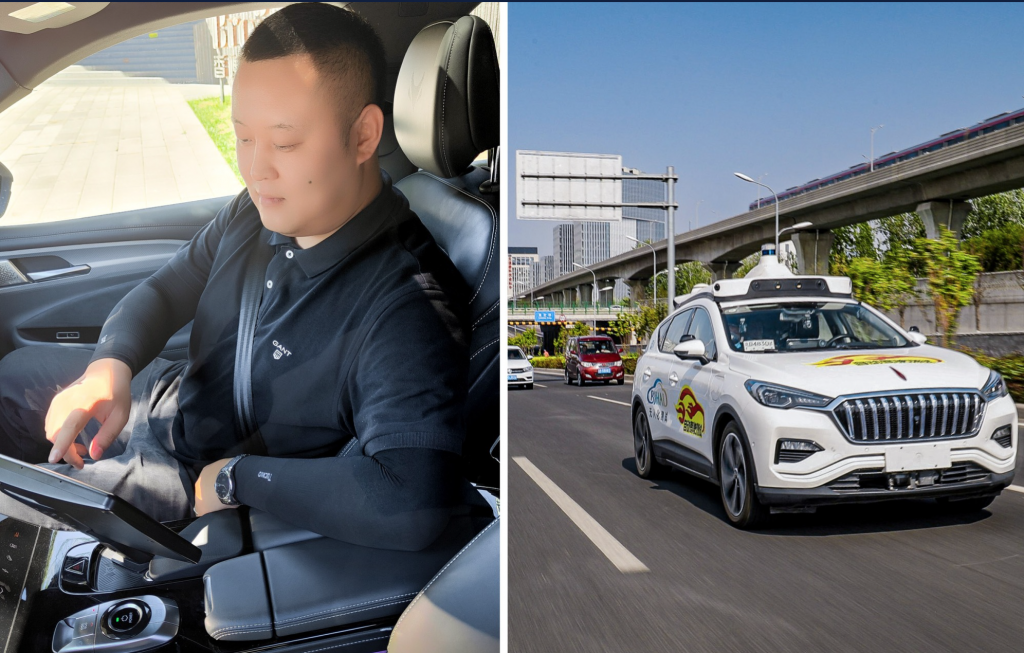
Liu Yang checks the robotaxi’s safety features on a computer screen. The Baidu robotaxi is depicted in the second frame. (Source: Baidu)
Riding Along with Liu Yang Shows Day in Life of Robotaxi Safety Monitor
Most self-driving cars still have drivers, such as Waymo in Phoenix, but in Beijing, Baidu’s human monitors sit in the passenger seat, according to a story on MIT’s technologyreview.com. A robotaxi safety operator named Liu Yang describes his job for Baidu, which he’s had since January 2021, monitoring the self-driving taxis for the tech giant.
“Today, self-driving companies from the U.S., Europe, and China are racing to bring the technology to commercial application,” the technologyreview story reports. “Most of them, including Apollo, the self-driving arm of Baidu, have started on-demand robotaxi trials on public roads but still need to operate with various constraints.”
Yang, who has an associate degree in human resources, previously worked as a driver, according to the story by Zeyi Yang. Now he “drives” a robotaxi five days a week in Shougang Park, a 3.3-square-mile former power plant in Beijing redeveloped into a tourist attraction after being a sports venue for the 2022 Winter Olympics. The park was designated as a trial area for robotaxis, so his passengers are usually employees who work there or tourists visiting on weekends.
The driver has ridden in several robotaxi models and has seen policy changes in his 19 months as a safety operator.
“In April 2021, Baidu acquired the license to put the safety operator in the front passenger seat instead of the driver’s seat (only within Shougang Park), and Liu subsequently switched his position and said goodbye to the steering wheel. On July 21 this year, Baidu revealed its new robotaxi model whose steering wheel can be removed. It is expected to be in operation in 2023.”
The rest of the story is a question-and-answer session with Yang, basically explaining everything you’d want to know about being a robotaxi monitor. He reports problems to the engineers and they work on fixing them.
read more at technologyreview.com







Leave A Comment